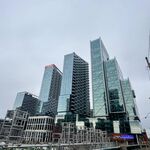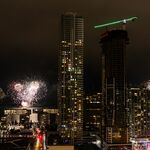steveintoronto
Superstar
I'm still digesting this, but hopefully this will shed some light on the issue of "unoccupied", but again, this has only secondary bearing on laneway housing issues: (NOTE! This is from the 2011 Census)
http://www.urbanfutures.com/foreign-unoccupied/[...]
Unfortunately, discussions around these issues have suffered from the incorrect reference to—and use of—Census data. Largely a result of not considering the precise Census definitions for the data, the discussions have at best misrepresented what the Census attempts to measure, and at worst supported misconceptions about housing occupancy in the region. Either way, if there is going to be a meaningful discussion about housing, and meaningful policy responses to particular issues or trends that we, as residents of the region, feel need attention, it is necessary to know what the data are and what they mean before we draw any conclusions from them.
In order to provide some clarification on both the definitions and the data, we purchased a custom tabulation of the Census data in question, thereby allowing us to more fully explore and explain two elements of housing occupancy: a) foreign and/or temporary residents and b) unoccupied dwellings.
The following is a summary of the major findings from our research, and it is supported by a technical backgrounder, Housing Occupancy in the City of Vancouver and Region: 2011 Census Results Plus, that details the data sources and definitions in question.
The Census Definitions
Among many other things, the Census counts the number of private dwelling units occupied by usual residents; this includes all units whose residents considered their residence in this region to be their primary place of residence on May 10th, 2011. Units occupied by persons who considered (or who were deemed to have considered) their primary residences to be elsewhere (in Canada or abroad) were classified as occupied by foreign and/or temporary residents. In this group are students who live in a private dwelling during the school year (and perhaps while working at a summer job) but at some point during the year live elsewhere, such as at their parents’ place. This group also includes foreign students, both short term (such as language students) and long term (such as graduate students) who lived here on Census day but have a principle residence elsewhere.
Also included in the foreign and/or temporary group are non-students who have a main residence elsewhere in Canada.This applies to people in a private dwelling in the region on Census day who have a main residence elsewhere in Canada, including those who were working here, on a short term or long term basis; visiting here to see or care for friends or family members; visiting as tourists; and those here on short courses and conferences. Another group or people included in the foreign and/or temporary classification are non-students who have a main residence outside of Canada. This applies to people, regardless of citizenship, who were in a private dwelling in the region on Census day but had a main residence outside of Canada, including tourists, workers, family visitors, entertainers and professional athletes (such as those who play on our home teams, but consider their homes to be elsewhere, and those who play for other teams who happened to be here, and in private dwellings, on Census day).
For these definitions, note a) temporary does not imply any particular length of stay, and can range from over night (in the case of tourists in private dwellings) to year long in the case of students - all temporary means is that people have, or are deemed to have in the case of some students, a main residence elsewhere; and, b) while much is made of the foreign within this group, it is much wider classification as it includes students, workers, friends and family, tourists and some of our sports heroes.
The Census definition of unoccupied units includes much more than units that are vacant on Census day. In addition to units that were empty (without people or furniture), unoccupied also includes all other units that were not designated as a main residence by a Census respondent and in which there were no occupants on Census day. These units range from the vacant and available for occupancy (including newly constructed units for rent or sale, and vacant existing units for sale and rent), to units vacant on Census day but with occupants on their way (e.g., people moving into a recently-purchased home), to occupied by usual residents who were temporarily away and did not complete a Census questionnaire and, finally, to being full of furniture as second residences for people whose main residences are elsewhere. It is important to note that the Census count occurs on May 10th, after the exodus of many students at the April end of the fall/winter academic term, something that has a significant impact on the number of unoccupied units counted in the Census.
What the Census Actually Tells Us
Foreign and/or Temporary Residents in Canada’s Metropolitan Regions
Given recent discussions about dwellings occupied by foreign/temporary residents in this region, it is productive to commence with consideration of how we compare to other census metropolitan areas (CMAs) in Canada. Dwellings occupied by foreign and/or temporary residents in the Vancouver CMA represent 0.8 percent of the dwellings in this region, about the same (insignificant) share as they do in other major metropolitan regions in Canada. In considering the 19 metropolitan regions in Canada with populations of at least 200,000, the Vancouver CMA was right in the middle of the pack with the Saskatoon and Regina CMAs (0.9 percent), and the Montreal and Victoria CMAs (0.8 percent).
The regions in Canada with relatively high levels of occupancy by foreign and/or temporary residents were the Sherbrooke CMA (2.0 percent) and the Kitchener/Cambridge/Waterloo CMA (1.5 percent), both of which have relatively large university and college populations. The Ottawa/Gatineau CMA was third-highest among the major CMAs at 1.2 percent, reflecting the influence of large post-secondary and political/diplomatic populations.
A similar pattern is seen when focusing specifically on the apartment markets of Canada’s larger CMAs. The 1.4 percent of the Vancouver region’s apartment stock occupied by foreign and/or temporary residents sits almost right at the 1.5 percent average for all of Canada’s 33 CMAs. Regions with above-average shares, once again, were Kitchener/Cambridge/Waterloo (3.5 percent), Sherbrooke (2.7 percent) and Ottawa/Gatineau (2.1 percent). There is no evidence in the Census data to indicate anything but normal levels of occupancy by foreign and/or temporary residents in this region: the greater the role played by post-secondary education in a region’s economy, the higher the level of occupancy by this group of residents.
[...continues at length with charts and tables, more examples...]





